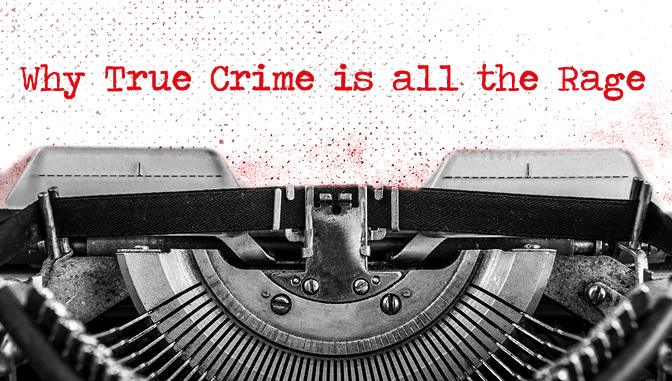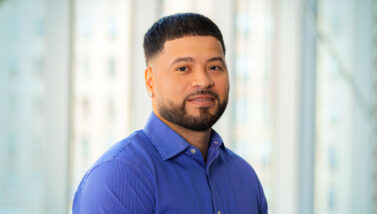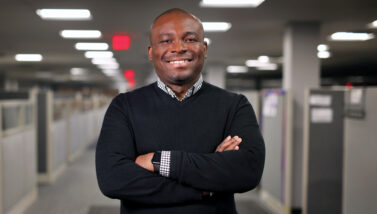The Phenomenon of True Crime

Evolution of True Crime Entertainment
Over the last few years, true crime has evolved from a low-brow, late-night indulgence to a global phenomenon and conversation about our criminal justice system and criminality in general. True crime can be about the mystery, psychology, history, and sociology of crimes. Audiences are eager to explore the extremes of human behavior, especially the psychological and social factors that trigger certain individuals to commit heinous acts of violence. People don’t just want to be entertained by watching or reading true crime; they want to understand criminality and play an active part in how justice systems respond to crime.
True Crime TV Shows and Novels
I will admit, my Netflix queue reads “MINDHUNTER,” “Criminal Minds,” “Ozark,” “Inside the Mind of a Serial Killer,” “Evil Genius: The True Story of America’s Most Diabolical Bank Heist,” and “Man Hunt: Unabomber.” My Kindle has “I’ll Be Gone in the Dark: One Woman’s Obsessive Search for the Golden State Killer” by Michelle McNamara and Jack Ryan novels by Tom Clancy. In the New York Times op-ed piece, “How Dostoevsky Predicted the ‘True Crime’ Craze” author Jennifer Wilson highlights the growing interest in shows like “Serial,” “Making a Murderer,” and the Peabody-awarded podcast “In the Dark,” and makes connections to the Russian author Dostoevsky (1821–1881), writer of “Crime and Punishment.”
So entrenched were the people of czarist Russia at the time of “Crime and Punishment,” that defense lawyers would invoke the novel’s main character, Rodion Raskolnikov, when seeking jury nullification. Dostoevsky was actually under much scrutiny himself, being a member of the Petrashevsky Circle, a literary group made up of progressive individuals with French utopian ideals, and wrote his novels with strong opinions on mercy, punishment, and death. Books like “The Brothers Karamazov” posed the question of collective guilt; thinking beyond the idea of guilt or innocence meant political incarceration, jury nullification, or how societal failures affected the individual.
We know the fictionalized versions of true crime stories are hyper dramatized or manipulated: “Making a Murderer” left out DNA evidence; the homicidal triad (“triad” of ominous childhood behaviors) has been debunked; and “Dog Day Afternoon” wasn’t just about Attica. However, they ask questions like those about socio-economic bias in “Making a Murderer,” the flaws of family or society with nonconformity in “MINDHUNTER,” and about disenfranchisement — whether transsexualism or prison riots — in “Dog Day Afternoon.”
Theory of Anomie
At the end of the 20th century, David Emilé Durkeim’s theory of anomie (when rapid population growth leads to a breakdown of communication, thus leading to a breakdown of norms and values) was attributed to three main arguments about crime in times of great modernization; they boil down to a greater variety of behaviors being tolerated and punishments changing to become functional law. While Durkeim’s work has been criticized for not focusing enough on socioeconomic inequality and its implication on crime, Durkeim’s main point was the effect of society on the individual.
Critical Criminology
Authors using crime drama to explore socioeconomic inequality and its effect on criminality is not new. According to Wilson’s article, what is new is that “Serial,” “Making a Murderer,” and “In the Dark” take a decidedly different narrative closer to the Attica prison riot in September 1971 or Dostoevsky’s writing in that “The genre is increasingly framed as reformist, with critiques of police abuses, overzealous prosecutions, and mass incarceration playing central roles.” In “Theorizing Criminal Justice: Eight Essential Orientation,” authors John Brent and Peter Kraska discuss how critical criminology, a branch of criminology that explains crime by challenging traditional perspectives and beliefs regarding crime and criminal justice, has targeted the government’s construction of and reaction to crime versus the acceptance, where the oppression orientation views of criminal justice is seen as an apparatus of oppression: “Early critical criminologists wrote during a time when the government was being critiqued passionately on many fronts. The criminal justice system was no exception…Quinney forthright claimed that ‘law has become the ultimate means by which the state secures the interests of the ruling class.”
Anomie and Critical Criminology – Theories in Opposition
Durkheim’s anomie theory and critical criminology are almost the opposite sides of the same coin. Durkheim saw failure of society to meet the changing social constructs of modernization as a core cause of deviancy, whereas critical criminology views police deviancy as enforcement of socioeconomic status quo, thus the search for justice must subvert to the public. In either case, the reason serial killers and true crime stories are topping the Pulitzer and Netflix lists, Wilson says, is the same reason Dostoevsky’s work did: “It is not only our task to support the innocent or wrongly convicted but also to recognize the humanity of the guilty and the shared sense of responsibility that we have for one another.” How do we do that now?


